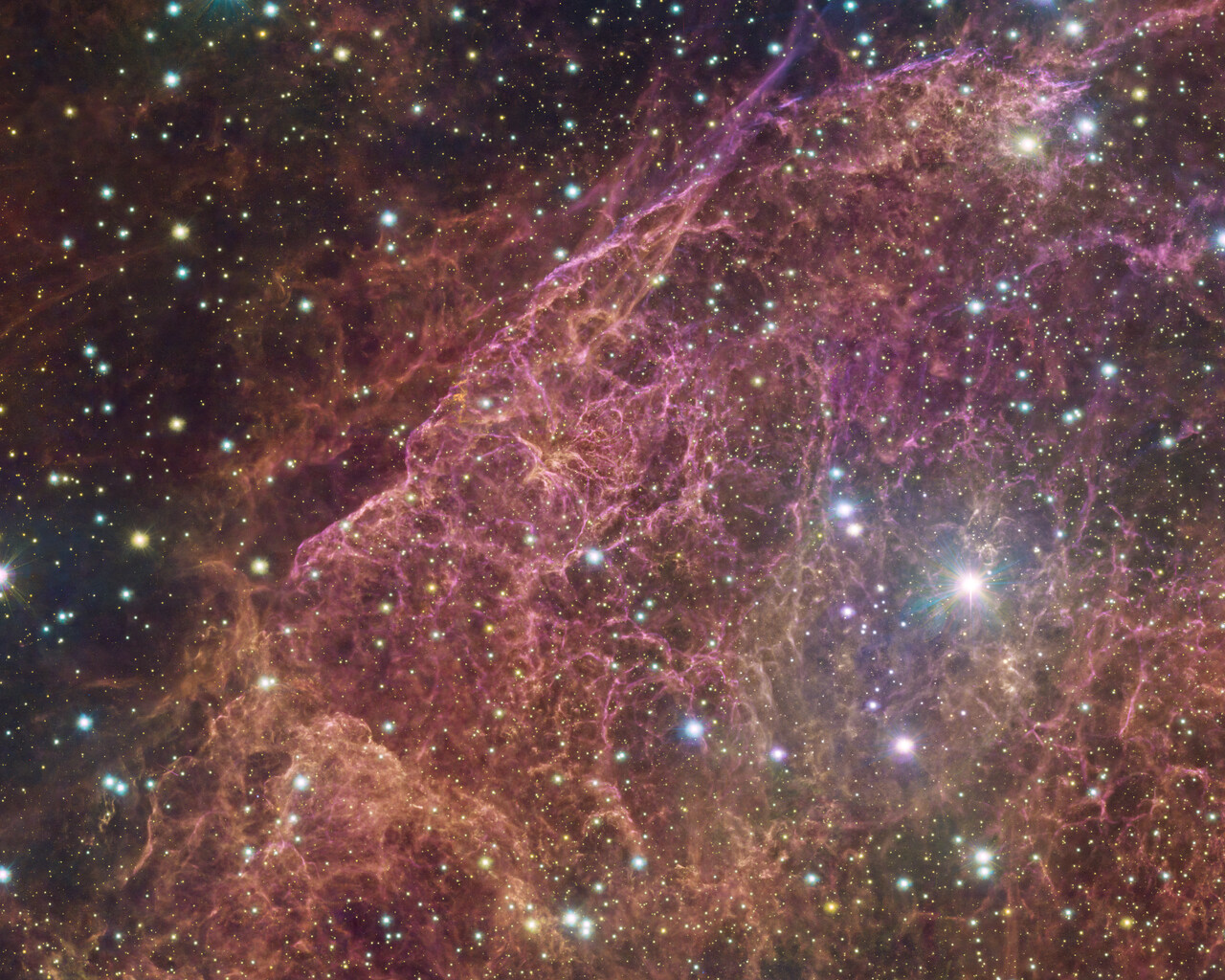ESO telescope captures beautiful remains of massive star that died in powerful explosion

These mesmerizing cosmic networks in the southern constellation of Vela are the remnants of a massive star that met its demise in a cataclysmic event known as a supernova explosion. The image, showcasing a small segment of a larger image captured by OmegaCAM, an enormous 268-megapixel camera mounted on the VLT Survey Telescope (VST) at ESO's Paranal Observatory in the Chilean desert.
VST is one of the largest telescopes in the world designed for surveying the sky in visible light. The OmegaCAM can produce images 16 times bigger than Hubble's Advanced Camera for Surveys (ACS).
While numerous bright stars adorn the image, it is the pink-hued gaseous clouds that irresistibly draw the viewer's attention. Delicate filaments, ranging from slender strands to more substantial tendrils, gracefully stretch outwards like intricate tentacles. As they interweave and intertwine, an elaborate network takes shape, merging with the ethereal backdrop of blurred clouds.
But the question remains: how did this extraordinary cosmic tapestry come into existence?
According to ESO, about 11,000 years ago, a colossal star exploded as a supernova - a powerful and explosive event that occurs at the end of a massive star's life cycle. The powerful eruption ejected its outer layers into the surrounding space, creating a vast shell of cosmic debris. Propagating through the interstellar medium, the supernova's shock waves rippled outward, compressing and sculpting the surrounding gas.
The intricate network of filaments and clouds visible in the image is a testament to the interplay between these shock waves and the stellar remnants, resulting in a phenomenon known as a supernova remnant.
Remarkably, the Vela supernova remnant, situated approximately 800 light years away from Earth, is one of the closest known to us. Its proximity provides astronomers with a unique opportunity to study the aftermath of a supernova explosion up close, unravelling the intricate dynamics and evolution of these cosmic events.
💥 Sometimes dramatic events are needed to create something stunning. This beautiful structure of filaments and clouds in the southern constellation of Vela is all that remains of a massive star that died in a powerful explosion known as supernova. 1/ pic.twitter.com/u1EW2lUhBE
— ESO (@ESO) May 29, 2023
- READ MORE ON:
- supernova
- supernova remnant
- Vela supernova remnant
- VLT Survey Telescope










